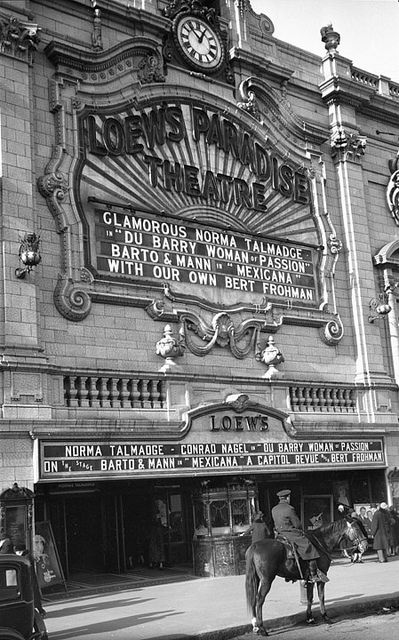
The Loews Paradise in The Bronx (1930)
I. Introduction
There have been a few occasions, in the Cartoon Research Facebook page, where questions have been raised as to whether or not cartoon “X” was shown with feature “Y” during the 1930s, 1940s and 1950s. This, in the same sense that certain animated short-subjects have been, in recent years, tied to certain features (as is the case with Pixar shorts, for example).
The typical answer given to these questions, which I believe is correct, is that there was no set tie between “X” and “Y,” and that the relationship could vary greatly from theatre to theater.
 Being a fan of history in general, and industrial/financial history in particular, this question intrigued me, since the story of the evolution of the motion picture business from its earliest days in the 1890s through the forced divorce of production and distribution from exhibition, as ultimately upheld by the United States Supreme Court in 1948 (in the so-called “Paramount Decree,” United States v. Paramount Pictures, Inc., 334 US 131) is a fascinating one.
Being a fan of history in general, and industrial/financial history in particular, this question intrigued me, since the story of the evolution of the motion picture business from its earliest days in the 1890s through the forced divorce of production and distribution from exhibition, as ultimately upheld by the United States Supreme Court in 1948 (in the so-called “Paramount Decree,” United States v. Paramount Pictures, Inc., 334 US 131) is a fascinating one.
As a fan, in addition, of animation history, it has been a source of interest to me whether or not certain of the business practices of the Hollywood firms of the “Studio Era” might have affected the way patrons would have seen cartoons during those years.
One problem with trying to address this question is that newspaper advertisements of the era are not terribly consistent in the way animated cartoons are noted on the bill; many times, no mention at all is made of the supporting bill, or if there is any mention, it tends to be limited to something that might readily catch a patron’s attention, such as a Mickey Mouse cartoon, and not necessarily an offering from one of the other studios.
The challenge, then, was to find a venue that would provide a detailed description of a particular theater’s program; one that was published over a lengthy period of time; and one that would show offerings from a number of studios.
After some research, and in part owing to a trove that has been selling off on eBay in recent months, I believe I have found one source that can shed light in how cartoons were programmed, at least in a specified locality over a lengthy period from the early 1930s to the very early 1940s. Loew’s Weekly, a publication put out by the parent firm of Metro-Goldwyn-Mayer, Inc. (MGM), is I believe something that can fill the three criteria I have just mentioned.
In this essay, using the Weekly, I propose to show how Loew’s programmed cartoons in the New York City area in the 1930s, using a sample of issues of the Weekly, mostly for a few select theaters in Brooklyn, Manhattan and the Bronx.
Before getting into the mechanics of the Weekly, and the results of the survey of issues of that publication I’ve been able to obtain, it may be worth to take a slight detour to look at the mechanics of the industry as it evolved through the 1930s.
II. Background of the Industry
A. The Players
Most of the major firms that constituted the “Studio System” in 1930s Hollywood had evolved at various points starting in the 1910s or just before, and by the early 1920s, most of the players were in place.
Even though some firms, like Warner Bros., had started out with a few theaters, in most cases, it was the production arm that controlled the distribution and exhibition arms. Loew’s Incorporated, founded by theater impresario Marcus Loew, was an exception to this pattern; Loew’s was unusual in that the exhibition arm effectively controlled the studio and the distribution operations. (Arguably, Radio-Keith-Orpheum, founded on the structure of one of the nation’s largest chains of vaudeville houses, fit this definition as well.)
As of the late 1920s into the early 1930s, there was a hierarchy of studios. Operations that controlled a large exhibition arm, as well as production and distribution arms, were generally considered the “majors.” Fox Film Corporation (as it would be known until a 1935 merger with 20th Century Productions), Paramount, Warner Bros., Loew’s-MGM, and RKO were the generally recognized members of this group. Operations that had significant production and distribution arms, but limited exhibition ownership, generally formed a second tier of studios, and in the 1930s, these were generally recognized to comprise United Artists, Columbia Pictures and Universal Studios. In a third tier, below these eight studios, were the so-called “Poverty Row” studios, which generally operated in certain niches of the industry, and which included (after the mid-1930s), Republic Studios, Monogram, and Producers Releasing Corporation.
In the period covered by this essay (roughly first quarter 1930 to second quarter 1940), the relevant animation players can be summarized as follows, omitting some of the changes that occurred in the late 1920s (such as Disney’s tenure with Universal):

As you can see from the chart above, each of the five “majors” and each of the three “mini-majors” at some point or another had affiliated cartoon studios, which supplied the studios with the animated cartoon portion of their programs, should there be one.
B. The Structure of the Industry
As referred to above, each of the five “major” studios, and to a vastly lesser extent, each of the three “mini major” studios, had three basic parts to their operations: production, distribution, and exhibition.
The middle prong of this structure, distribution, had evolved in the starting at the turn of the 19th century when it became clear the industry was growing to a point where it was not practical for movie producers and movie exhibitors to deal with each other directly.(see footnote 1)
Distributors could acquire movies from the producers and rent them out to exhibitors, renting the same films over and over; from the producer’s standpoint, they had a guaranteed customer for their output, and from the exhibitor’s standpoint, they had a central location where they could acquire product for their theaters. By 1907, the industry had evolved into these three separate, inter-dependent operations.(2)
During the years the Motion Pictures Patents Company attempted to enforce a monopoly on the industry (ca. 1908-1914), restrictive industry patterns of when, how and to whom films would be rented started to emerge. One of these was a system by which certain theaters were guaranteed exclusivity for certain films for a certain period of time, known as the “run-zone-clearance” system.(3) This prevented theaters in the same area from competing with each other by showing the same films at the same time, and protected the profits of first-run houses against competition from second-run and later-run houses.(4)
Starting in the late 1910s, Famous Players-Lasky (the predecessor of Paramount Pictures) developed the concept of “block booking.” In this way, a producer (e.g., Paramount) would force an exhibitor to take an entire package of films, even though the exhibitor might only want certain of the films in the package.(5) This was ideal from the standpoint of a producer, since it had the effect of locking in profits, even for second-rate product, and ensured predictability in the market for the producer. A major problem for exhibitors was that, in effect, they were “buying blind,” that is, they were buying product for a year that had not even been produced yet, the producers using the proceeds from the block-booking sale to finance their operations. Exhibitors were funding product that did not exist, and that in part they did not want.(6)
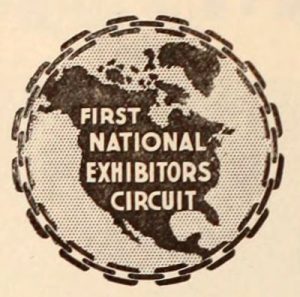 One response to this was the growing trend of horizontal mergers of theaters, creating theater chains that could bargain with more power against the producers. First National Exhibitors Circuit, formed in 1917, was one of the first of these organizations (if you look at FN’s logo, you will note that it is a map of North America encircled by a chain). First National’s conflict with Famous Players-Lasky moved that firm to establish its own theater chain to protect its interests.(7)
One response to this was the growing trend of horizontal mergers of theaters, creating theater chains that could bargain with more power against the producers. First National Exhibitors Circuit, formed in 1917, was one of the first of these organizations (if you look at FN’s logo, you will note that it is a map of North America encircled by a chain). First National’s conflict with Famous Players-Lasky moved that firm to establish its own theater chain to protect its interests.(7)
In response to these moves by Paramount, other players began to engage in vertical integration, marrying production and exhibition. First National, for example, began producing films on a large scale in 1922, having financed Charlie Chaplin for a few years. Loew’s, which as of 1920 owned approximately 100 theaters, took over a small production company called Metro, and later in 1924 acquired the production facilities of Louis B. Mayer and Samuel Goldwyn to form MGM. Fox, by contrast, expanded from production and distribution into theater owning by starting a vast program of construction.(8)
What eventually emerged was that the major Hollywood studios were vertically integrated, owning production, distribution and exhibition, but in the case of exhibition, their facilities were scattered over the country, with different firms being strong in different areas.
Competition existed only in a select group of metropolitan areas, and the firms needed their competitors’ products in order to fill their schedules.(9)
This is one of the key points with relevance for this essay; no firm like Loew’s could be in a state of autarky, where its product and only its product could be seen in its theaters.(10)
There had to be bargaining and dealing with the likes of the other majors, the mini-majors, and even a few of the Poverty Row studios to fill the voracious appetite of moviegoers for fresh product.
Studios cooperated with each other, and in certain cases, gave each other preferential treatment. For example, Fox Film Corporation and Paramount Pictures had a sweetheart deal in the 1920s whereby each company favored the other over the rest of the studios when booking movies for its theaters.
The importance of this concept, for our purposes, is that “diplomatic relations” among the various Hollywood studios could significantly affect which studio’s product ended up in which studio’s theaters.
In the period of time covered by the survey of the issues of the Weekly, the Hollywood studios were thus in a position where they had a series of formal and informal relationships with each other, and with independent exhibitors, that had a strong influence on when and where pictures, including animated short subjects, would appear in theaters.
It should be noted that in 1940, the U.S. Department of Justice entered into a consent decree with the five majors (but not the three minors) which, among other things, explicitly barred the practice of forcing exhibitors to screen their shorts as a condition of obtaining features.(11) This does fall outside of the period of time of this study, but it does highlight that the major studios were using their animated cartoons as weapons in the battle for business. It has been noted as well that because the minors did not accept this consent decree, after 1942, business slowly reverted to prior practices, until the final “Paramount Decree” in 1948.(12)
C. New York City Theaters
New York City, being the nation’s largest city and a traditional center for the entertainment industry, was an extremely important market for all of the studios, and most of the studios at least maintained one or more flagship, first-run theaters to show off their product.
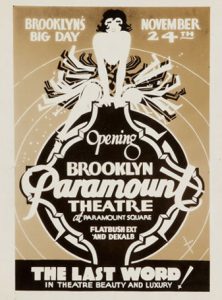 The Paramount Theater on Times Square, for example, was the lead theater of the entire Publix chain for Paramount, and the firm itself was headquartered in the same building. William Fox built some elaborate theaters in the area, including the Fox Theater in Brooklyn, a major movie palace, and Warner Bros. owned the Warner Strand on Times Square as its local flagship.
The Paramount Theater on Times Square, for example, was the lead theater of the entire Publix chain for Paramount, and the firm itself was headquartered in the same building. William Fox built some elaborate theaters in the area, including the Fox Theater in Brooklyn, a major movie palace, and Warner Bros. owned the Warner Strand on Times Square as its local flagship.
Two of the five majors, however, had the biggest footprint in the New York City area. These were Loew’s, and Radio-Keith-Orpheum (RKO), the latter building on a long history of owning vaudeville theaters in the city.
By the late 1940s, RKO had reduced its theaters in the Greater New York area to 55, but Loew’s was still the market leader, with 131 theaters.(13) Considering that in the late 1930s Loew’s had only 139 theaters nationwide (14), it does show how heavily concentrated Loew’s was in the New York City area, with some outposts in Connecticut and Ohio.(15) Precise theater numbers can be a bit hazy, since there was a constant ebb and flow of ownership and part-ownership of theaters. Still, the basic point remains that looking at the Loew’s Weekly issues for New York City represents a significant portion of its theater business nationwide.
Loew’s owned some major first-run houses in the metropolitan area, with the Capitol Theater and Loew’s State in Manhattan being the two major venues for movie premieres, with a series of “wonder theaters,” the Loew’s Jersey City, the Loew’s Valencia, the Loew’s Paradise, the Loew’s Kings, and the Loew’s 175th Street theaters being constructed to help cement Loew’s leadership in the area. Behind this, there was a large network of “neighborhood” theaters in residential areas, such as the Loew’s Premier and Loew’s Oriental in Brooklyn, or the Loew’s Sheridan in Greenwich Village.
One quirk of the two major Loew’s theaters in Manhattan was that both retained heavy rotations of live acts (what Loew’s called “Ace Vaudeville”) well into the 1930s and beyond, which had a tendency to restrict what was shown on film in those theaters beyond a particular featured film.
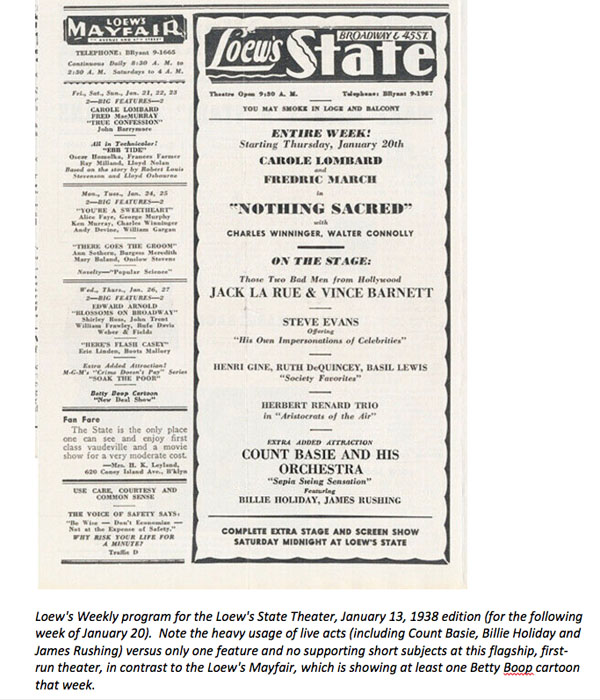
It should be noted that the tie-ups between the Hollywood studios could get quite complicated. One example germane to our study is described in Matt Lambros’ book Kings Theatre: The Rise, Fall and Rebirth of Brooklyn’s Wonder Theatre.(16) “By the mid-1920s,” Labros writes, “Loew’s had a larger theater presence on the East Coast of the United States and Zukor had more in the middle of the country. Instead of continuing to expand into the other’s territory, they came to a mutual agreement. Loews would show [Paramount] films at his neighborhood theaters and Zukor would show MGM films at his. That way, neither one needed to expand into the other’s territory beyond what theaters they already controlled.”(17) After getting wind of some significant theater construction plans in New York City, MGM executives, in return for showing Paramount films in over 40 of Loew’s theaters, would sublease three theaters from Paramount, the Pitkin, the Valencia and the Kings.(18)
The fact that Paramount had a great deal of success in the 1930s in placing its features and animated short subjects in Loew’s theaters in New York City, therefore, is no surprise.(19)
The overwhelming majority of the issues of the Weekly that were available for review were for a handful of the neighborhood theaters, mostly in Brooklyn.
III. Loew’s Weekly
It might be supposed that newspaper advertisements would be a fruitful source of knowledge regarding how animated films were presented, but an examination of advertisements, at least as they were presented in the upscale New York Times, seems to indicate that in the main, there simply was not enough room to present a complete picture of the program.
To be sure, certain theaters would make a point of noting if they were showing a Mickey Mouse cartoon, and on occasion, there were specific cartoon programs run, albeit programs that did not lay out which cartoons would be on the program.
Thus, to my mind, it would be very difficult to get a firm reading from newspaper advertisements as to how animated cartoons were presented.
Cinemas, of course, were not restricted to newspaper advertising, and since the earliest days had used both programs and advance fliers to tell patrons what they could expect. At the top of the line, some programs (like those produced in the late 1920s and early 1930s for the prestigious Roxy Theater in Manhattan) were virtual miniature magazines with not only programs, but columns on fashion and advertising. Other programs, like those for the Paramount Theatre on Times Square, were very detailed, as befitted the elaborate Publix shows that were staged there.
I have a handful of samples for each of these two theaters in hand for the late 1920s and early 1930s, but neither is in sufficient numbers to give more than a rough guess as to how each theater may have presented animated cartoons. “Roxy” is known to have presented some of the most important Disney cartoons, and the Paramount did show a handful of cartoons, according to the programs I own.
The most sophisticated kind of flier that was produced was usually a four-page product, which featured a number of “blurbs” promoting a particular studio’s product, a program for a particular theater or group of theaters, and perhaps a few public service messages or letters from readers.
The “blurbs” were not exclusively for MGM product, though in the main MGM products tended to be featured. For example, the February 22, 1940 edition of the Weekly features the Fleischer/Paramount feature Gulliver’s Travels on the cover, and on occasion Paramount or Warner Bros product might be featured, though the latter occurred principally in the 1933-1934/1934-1935 period.
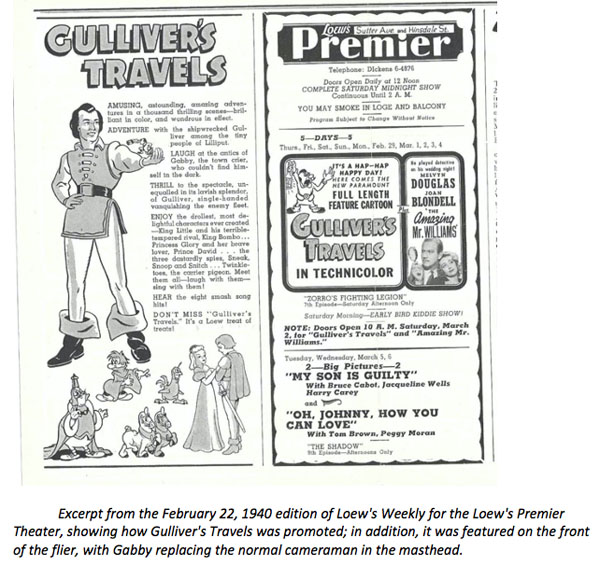
In the New York City area, both of the dominant players, Loew’s and RKO, produced such publications; in addition, I have a few samples of works that were produced by Fox for theaters in Brooklyn, and one for the Paramount-Publix theaters in New York (as to Warner Bros., I have some samples of similar publications, but for Philadelphia). These fliers were not peculiar to New York City: I have samples from Fox and Loew’s for such wide-ranging areas as Philadelphia, Pittsburgh, Cleveland, Buffalo, Boston, Jersey City, Oakland and Nashville.
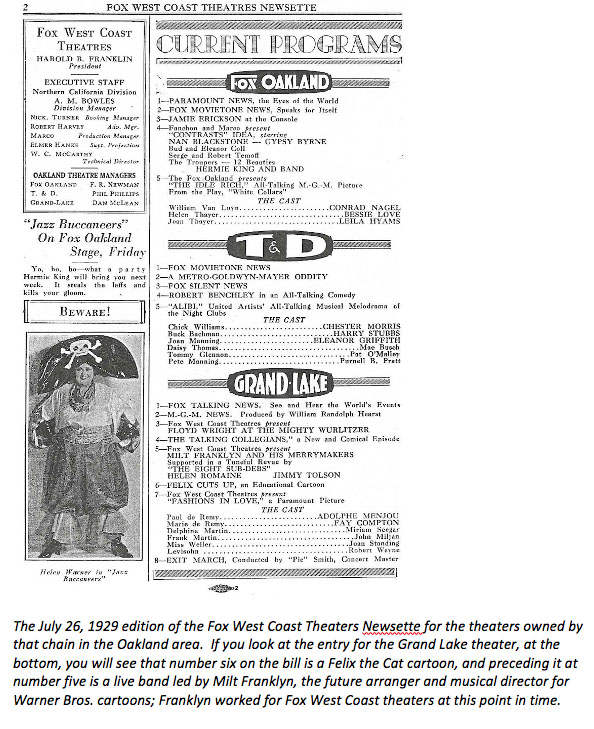
From its headquarters at the Loew’s State theater building, Loew’s in New York City would produce, each week, a copy of the Weekly tailored for a particular theater. I have examples of the Weekly that were produced in the same week for different theaters or groups of theaters, and they show that while there was some overlap in what was presented at each theater, what was on the bill was not necessarily identical.
Each issue of the Weekly was prepared one week in advance, presumably to allow time for the flier to be mailed to patrons and for patrons to then plan their movie-going.
At least in New York City, the Weekly seems to have started publication sometime around 1920; the earliest edition I have dates from November of 1924, and is noted as being “Volume 5.” The last issue that I have been able to locate is from June of 1940. (Thus, with the exception of the debut cartoon in the series, Tom and Jerry falls out of the period of the analysis in this essay.)
This is a breakdown of the sample on a year-by-year basis — in some cases, I was only able to obtain an electronic copy of the Weekly, and not the hard-copy:
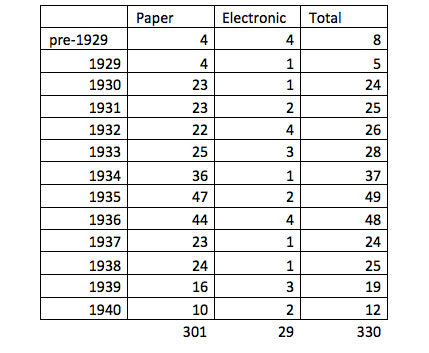
The number of editions of the Weekly each week would have been substantial; while some theaters seem to have had combined editions, a number of theaters had editions unique to their theater. In one case, I have editions of the Weekly for the same week for three different sets of theaters. Thus, the 309 editions of the Weekly surveyed would have been a small fraction of the total, aggregate numbers of Weekly editions published throughout New York City.
Given the small sample size, it is hard to draw many conclusions, but at least in New York City, the New York City editions of the Weekly do not call out any cartoons in the silent era or in the very early sound era; this is in contrast to editions in Pittsburgh and Nashville, where even in tiny samples, cartoons are regularly identified (with the management of the Nashville Loew’s being particularly keen on the Aesop’s Fables cartoons).
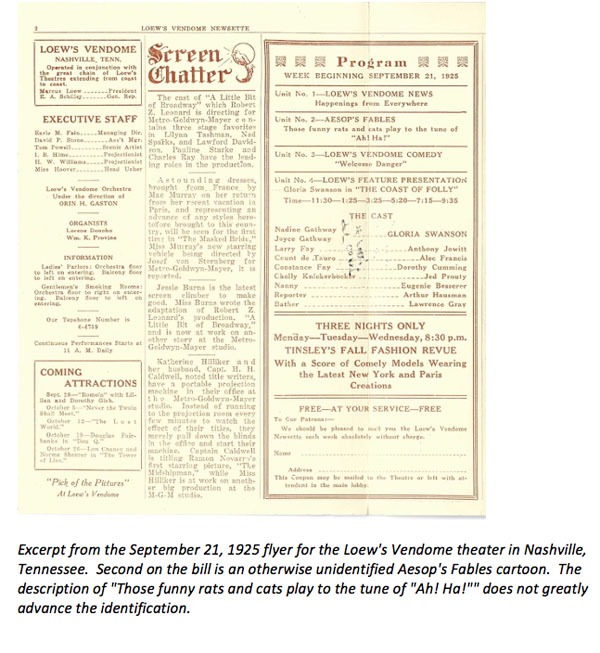
IV. Analysis of Cartoon Showings at Loews in New York City
Of the sample of the Weekly for New York City that was available, 278 separate theater showings of cartoons were identified; this includes known occurrences where two different theaters in the same week might be showing the same cartoon (for example, during the week of December 6, 1935, when both the Loews National in the Bronx and the Loew’s Premier in Brooklyn showed the Harman-Ising cartoon “The Old Plantation”), or where a cartoon might be shown in one theater one week, and in another not long after.
There is one major confounding factor in the analysis that needs to be addressed. In late 1935 and early 1936, the Loew’s Premier theater in Brooklyn, a “neighborhood” theater, experimented with opening an hour earlier (11 AM versus noon) on Saturday, with a showing of a package of cartoon shorts and live-action two reel comedies. The idea appears to have been dropped some time shortly after that, but is picked up again in the fall.
A key element of this might be tied to the fact that in the summer of 1936, New York City passed an ordinance that allowed youngsters to attend movie theaters unaccompanied, in special sections that were policed by matrons.(20) At least one contemporary account noted that first-run theaters and theaters in areas with few children were not adopting the voluntary policy.(21) This policy, new in 1936, was called out in a few issues of the Weekly in late summer, 1936, and I do not believe that it is a coincidence that shortly after that, the Premier began to regularly open at 11 AM on Saturdays for an extra hour of cartoons and live-action shorts, something that the Premier theater would continue to do for the rest of the time period covered by the sample (but not other theaters in the sample during the same period).
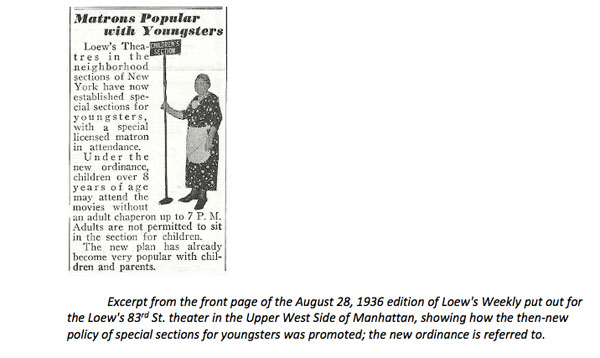
(The Weekly, notably, carried a letter from a mother praising the Saturday 11 AM openings in its January 6, 1938 edition for the Loew’s Premier theater!)

Unfortunately, aside from the December, 1935/January, 1936 experiment, and the “Mickey Mouse Birthday Party” in the fall of 1936, the Weekly does not call out which cartoons were shown in this special program, only that the program was being presented. Given that four cartoons (and one two-reel live action short) were shown, this would have a significant impact on the overall numbers of cartoons shown, and which studios’ output was being presented.
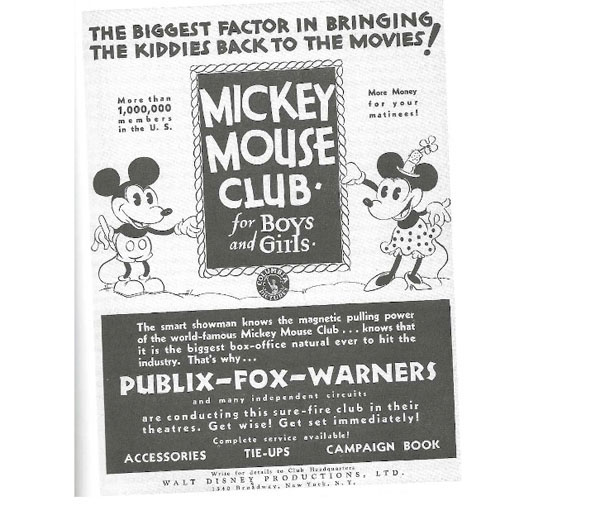
The concept of Saturday morning cartoon programs preceded the New York City ordinance by some years. In the early 1930s, as evidenced by this 1931 advertisement (taken from The Talkies: American Cinema’s Transition to Sound 1926-1931 by Donald Crafton (University of California Press, 1999, p. 259), the Disney studio aggressively pushed the idea of “club” Saturday matinee meetings to boost Depression-era attendance, and is described as a “powerful force in cultivating return audiences.” Note how three different circuits associated with major studios are called out in this particular advertisement. Loew’s does not happen to be one of them. Note also the Columbia studio tie-in, Columbia being the firm distributing the Disney cartoons at this time.
It is quite possible that, say, more Warner Bros. cartoons would have been shown during the Saturday programs in the late 1936-early 1940 era, especially as that studio’s reputation grew, but unless one could find the records of the theater showing precisely what cartoons were rented during the week (ledgers for such information for the Loew’s Oriental theater in Brooklyn exist for the 1940s, and are on sale on eBay as of this writing), it is very hard to make any firm conclusions.
Given the relative lack of Universal, Fox, RKO and Warner Bros. feature films being shown in the Loew’s New York City theaters in the 1936-1940 era, though, and Paramount’s success in placing features (as well as Popeye’s continuing popularity in that era), it does seem likely that the Paramount and MGM cartoons would have done well in these Saturday shows, with Columbia showing up consistently, with the other studios suffering. The absence of Disney/RKO cartoons in the “normal” showings after April, 1938 is telling, and could well have affected their availability, especially as the arch-rival RKO chain in New York City might have used the cartoons for its own Saturday morning showings.
The following chart summarizes the findings on a studio-by-studio basis (a combined 11 Mickey Mouse and Silly Symphonies cartoons were released by Columbia, and none by RKO):
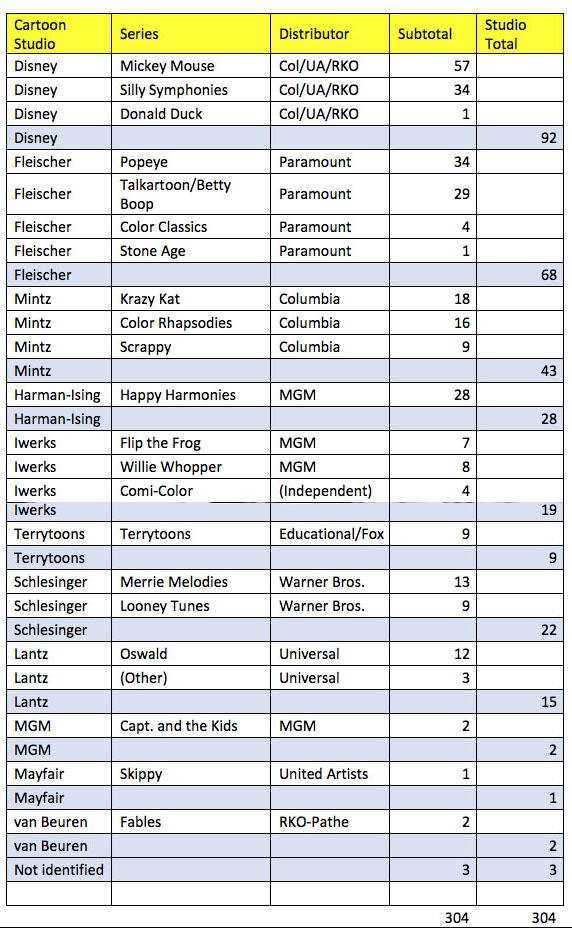
In looking at the programs in which each cartoon was presented, I identified 56 cases (a fraction over 20% of the total) in which a particular studio’s cartoon was on the same bill as a feature presentation from the same studio, accordingly:

TO BE CONTINUED: What follows next week are my thoughts on each of the cartoon studios, in the order presented above. Click HERE to read Part 2.
FOOTNOTES
1 – Izod, Hollywood and the Box Office, 1895-1986 (New York, Columbia University Press, 1988), page 15.
2 – Izod, page 15.
3 – Izod, page 19.
4 – Izod, page 40.
5 – Izod, page 47.
6 – Izod, page 48.
7 – Izod, page 49. See also Krefft, The Man Who Made the Movies (New York, Harper, 2017), page 289.
8 – Izod, page 50.
9 – Izod, page 51.
10 – Krefft, page 531.
11 – Izod, page 121.
12 – Izod, page 121.
13 – Conant, Michael, Antitrust in the Motion Picture Industry (Berkeley: University of California Press, 1960), page 56.
14 – Izod, page 89.
15 – Conant, page 52.
16 – Pittsburgh: Theatre Historical Society of America, 2016.
17 – Ibid, page 4.
18 – Ibid, page 13.
19 -Conant describes a situation in 1944, after the period of this survey, where Paramount and Loews were at loggerheads over the rentals of 24 feature films in the Loew’s New York City circuit. If Paramount bypassed the circuit, it could have lost up to $1 million. Release of the 24 films was delayed until a mutually satisfactory arrangement could be made. Conant, page 73.
20 – New York Times, June 17, 1936 and July 18, 1936.
21 – New York Times, August 23, 1936.


 E.O. Costello is a New York-based attorney, whose love of history has led him to study, in depth, the cartoons of the 1940s and the historical and pop-culture references contained in them. He has written for Animato!, APAtoons, and was the creator of The Warner Bros. Cartoon Companion.
E.O. Costello is a New York-based attorney, whose love of history has led him to study, in depth, the cartoons of the 1940s and the historical and pop-culture references contained in them. He has written for Animato!, APAtoons, and was the creator of The Warner Bros. Cartoon Companion.
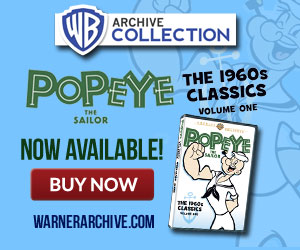
































































































A terrific piece of scholarship and something that finally begins to shed some useful light on this business of how and why a given short came to play with a given feature. I await further installments of this with great interest.
In a side note, I would add that the week-long engagement of Selznick’s NOTHING SACRED at Manhattan’s Loew’s State beginning Thursday, January 20, 1938 was not the New York premiere of the movie; it was a subsequent engagement of the popular film.
SACRED premiered at Radio City Music Hall on Thursday, November 25, 1937; The Carole Lombard/Fredric March starrer played exclusively for three weeks at the huge Rockefeller Center theatre. While later Loew’s State patrons would be lucky enough to be treated to the Count Basie Orchestra and Billie Holiday on the bill (which probably inspired numerous audience members to sit through the feature again in order to see more of Basie and Holiday), Music Hall attendees got to enjoy a big, plush Leonidoff stage revue with dance, ballet, music and the Rockettes… plus the then-new Donald Duck cartoon, “Modern Inventions.”
This is a fantastic history of a very confusing aspect of animation. I look forward to part 2!
Great topic, research and reportage! Looking forward to the next installment.
As a rule, I’m willfully ignorant of business practices in general. But this line of investigation lends insight into a key interest of mine, which is: what was the experience of seeing “classic” animation like, in the moment, when it was fresh? Most often, for one time only. As opposed to the “boomer” experience of seeing constantly them on TV in the 50s-60s.
Thanks E.O.
Bravo! Fantastic, detailed research of this time of cartoon history, and the business of movie theatres and chains that contributed greatly to the art of cartoons, their music, and commentaries.. We don’t want that era of cartoons to to become “lost art”. They were phenomenal pieces of developing animation entertainment, and greatly enjoyed by “children of all ages”. Bring on Part 2!
This article is a real eye-opener. For those of us who normally focus on the creative and technical aspects of animation history, it’s important to bear in mind that the corporate structures of marketing and distribution determined how animation studios were funded and thereby had a direct impact on the quality, and even the content, of their product.
The Renard Trio, on the program of Loew’s State Theater in 1938, had previously been the Renard Quartet; one of them must have died. They recorded arrangements of light classics for RCA Victor going back to the early years of the 20th century. I imagine three old men shuffling onstage to the tepid applause of an audience impatient to hear Count Basie. I just hope nobody threw popcorn or yelled “Boo!”
I had never heard of Mayfair Productions or Skippy cartoons. Were they based on the Skippy comic strip drawn by Percy Crosby? https://en.wikipedia.org/wiki/Skippy_(comic_strip)
Yowp covered the Mayfair “Skippy” story on his blog quite a few years back: https://tralfaz.blogspot.com/2012/09/the-stillborn-cartoon-studios.html
Yes, it was. If you search the Tralfaz blog, there’s an article on the saga.
While it’s true that you never really know what will or won’t go over, I think that “Skippy” — a great, if largely forgotten strip — could have worked as a series of cartoon shorts. The Tralfaz article is quite interesting. I’d like to know more about what happened.
There was a small follow-up to the Tralfaz blogpost on the old IAD board: https://www.intanibase.com/oldforum/index.php?topic=1027.msg13097
Fascinating stuff! I sort of guessed there were ways major features would show in competitors’ theaters, but never knew of the structures you explained here.
Noticed that Loew’s Premier page shows Gulliver’s Travels accompanied by the Republic serial “Zorro’s Fighting Legion”, while the midweek double feature has Columbia’s serial “The Shadow”. MGM and Paramount never produced serials to my knowledge, but interesting that this theater drew on two different studios for those titles. The same patterns you found in cartoons?
The website Greenbriar Picture Shows focuses on the history of exhibition. A lot of trade stuff and local-level promotion, and occasional newspaper ads highlighting specific toons like “Swing Shift Cinderella”
When I went through all of the listings (I have a whole Excel spreadsheet of this!), there was a fair amount of product from the same studio on the same bill, but yes, there was a great deal of mix-and-match, especially with the weekend-type shows that had more serials. I don’t believe Paramount or MGM (or WB or RKO or Fox, for that matter) did serials. Serials were the bread-and-butter of the “Poverty Row” studios, especially Republic, and I think Columbia’s experience was one reason they did fairly well in television, later.
Warner Bros. did produce serials, for example the 15-chapter “A Dangerous Adventure” (1922), but only during the silent era.
Fox did produce serials in the silent days- like FANTOMAS (c. 1920). Pathe’ did many serials in the 1920s. Pathe’ – which merged with RKO for a short period – did one sound serial – through Van Beuren, interestingly enough – THE LAST FRONTIER (1932) with a young Creighton Chaney (aka Lon Chaney, Jr.). Universal – of course – was making serials from almost the beginning years of the studio to 1946.
Mascot Pictures got started in the later 1920s and was heavy competition to Universal – especially in the early 1930s. Mascot merged with a few smaller studios – like the early Monogram organization – to become Republic Pictures around 1935. Republic would make very good to decent serials for the next 20 years.
My father talked more about Warner Bros. and Disney cartoons that he saw when he was growing up. Maybe the neighborhood theaters he frequented on the Northwest Side of Chicago didn’t play as many Paramount, Columbia or Terrytoon cartoon product in the late ’30s into the ’40s?